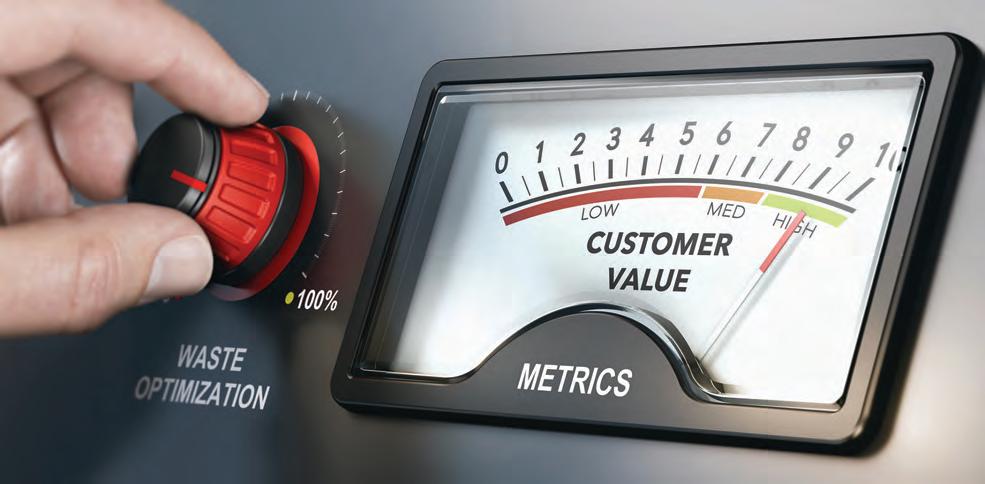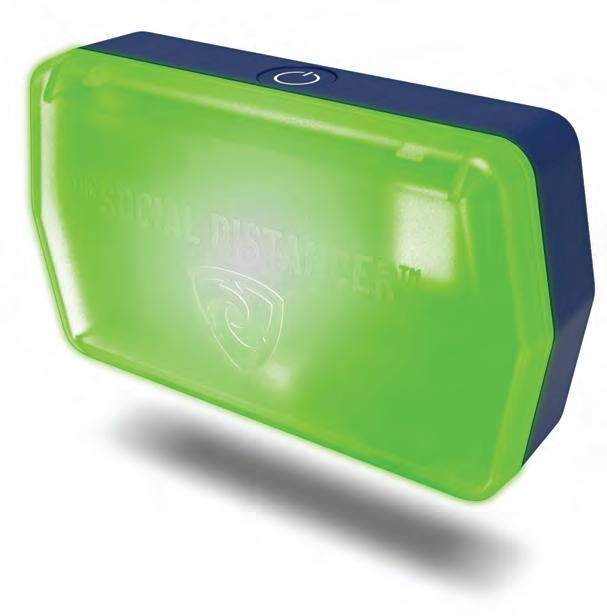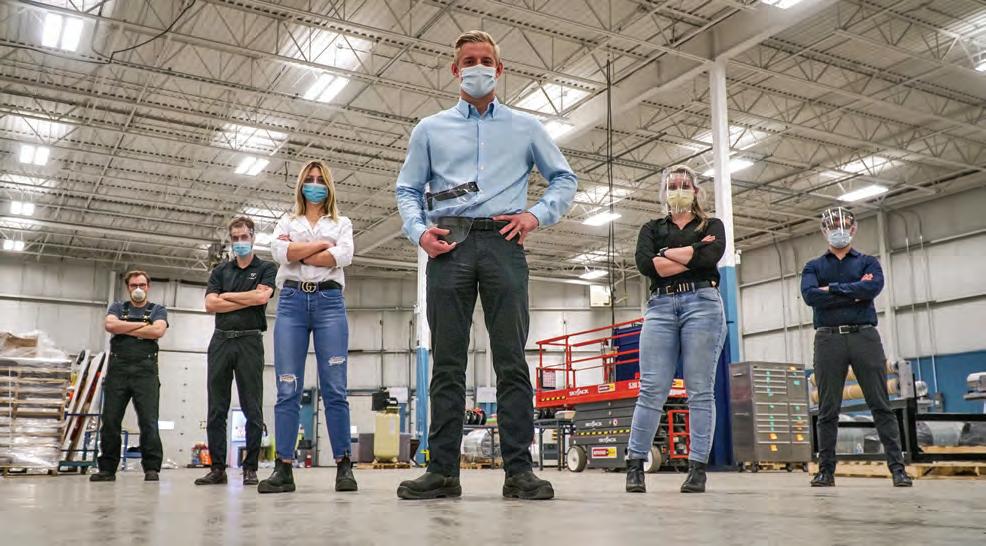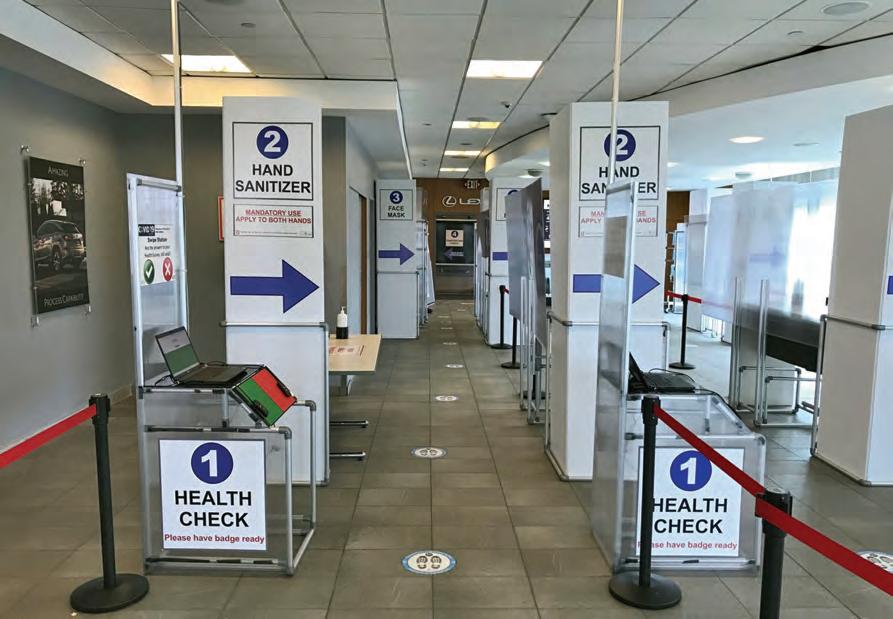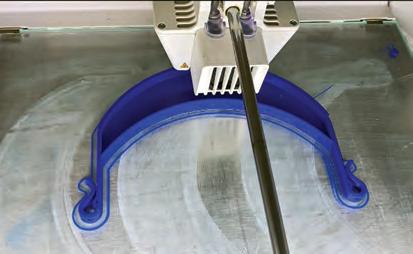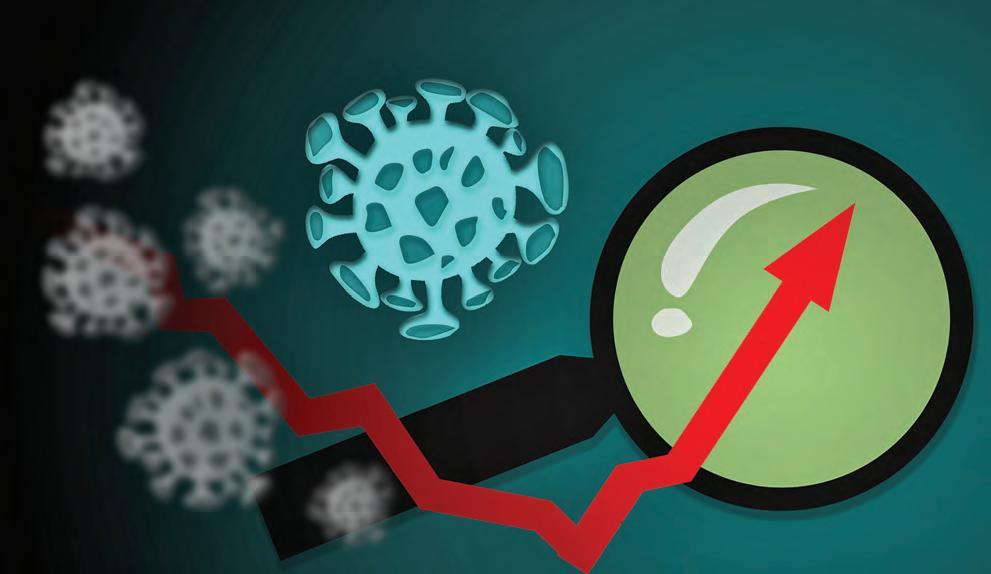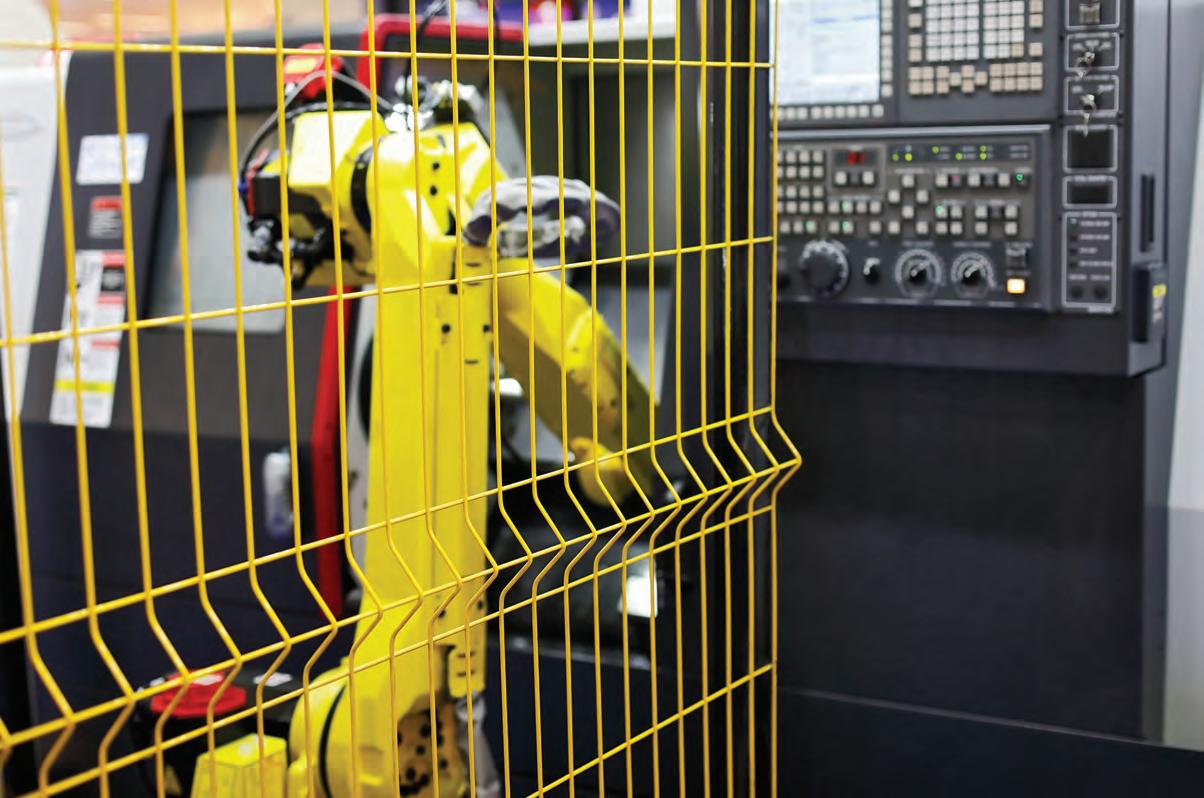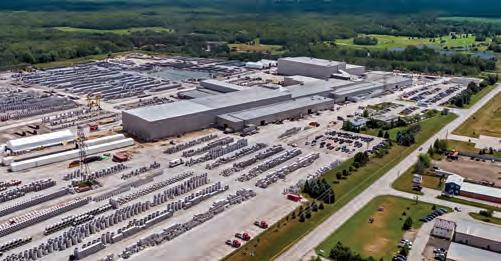with other safeguards such as sanitizing, personal protective equipment (face shields, gloves and hand-sanitizer), barriers, signage and the alignment of employee movement to ensure social distancing is maintained. The plants were assessed and changes made to accommodate physical distancing, physical separation and use of enhanced PPE while working, during all breaks, and while entering or leaving during shift changes. Cleaning processes were also enhanced, with high traffic areas such as break rooms and restrooms getting more frequent attention. These protocols continue indefinitely, with ongoing monitoring and Toyota says it will make changes based on federal, provincial and municipal public health recommendations.
Manufacturers conducting temperature screening have done so manually from the ear, but Haelzle says thermal imaging cameras allow rapid throughput and are capable of taking images. If a high temperature is detected, there’s also a capability to tie in with swipe cards to prevent access. To ensure efficacy of the data, parallel testing of ear readings and thermal imaging are compared. Whatever the size of the plant, getting back to business and building in long-term resiliency requires a layered approach that includes measures similar to those employed by TMMC. Haelzle likens it to stacking slices of Swiss cheese. They’re connected but the holes don’t line up. “Any one of those [measures] adds value, but on their own, they’re not anywhere near as
effective as integrating the whole solution,” he says. “The connected worker and social distancing is the end-piece that leads to resiliency planning for the long term.”
Moving people About the connected worker: that’s the essence of GHD’s Movement Strategies offering, which the engineering firm has been pitching to automotive companies. It’s a technology that comes from a UK company (same name) specializing in crowd dynamics and people movement in busy places. GHD acquired the firm in January. The connected workforce is real-time social distancing that could be, for example, an audible signal letting employees know they are getting too close. Part of that is contact tracing by
COVID-19
Honda PPE for front liners
Engineers innovate face shield design BY PLANT STAFF
The automaker is deploying its 3D printers and collaborating with Georgian College in Barrie.
H
onda of Canada Mfg. (HCM) is partnering with Georgian College to source materials and 3D print face shields for front line healthcare workers. The auto manufacturer’s Alliston, Ont. site, one of five Honda facilities in North America making equipment for doctors and nurses, is deploying four multiple-duty 3D printers at Plants 1 and 2 to make the protective gear. “The printers are normally used to make jigs and new model prototype parts, but we realized there was a new way to use them to help front line healthcare workers,” says Ahmed Amir, an HCM associate in the product-engineering department. The visor piece and the attachment feature are made in-house, while the clear face shield comes from the college in Barrie, Ont. “We designed the holder piece and for the visor portion, we get roll from a supplier and Georgian College helps us cut it,” says Jim Kerr, a production associate. “We can produce 27 of the hospital style a day, and 95 of the production style (for Honda associates).”
16 PLANT
PLT_MayJune2020_AMS.indd 16
Face shield holder on a 3D printer.
PHOTO: HCM
The HCM engineers collaborated with the Stevenson Memorial Hospital in Alliston on the face shield’s requirements, says Terry Grasby, also a production associate. “We make a couple of versions, the other for associates (who wear Honda caps) with a clip arrangement and holder (designed by Kerr).” The face shields are destined for the hospital, two long-term care facilities (Riverwood Senior Living and Good Samaritan Seniors’ Complex), Matthews House Hospice and My Sister’s Place shelter for women in Alliston. The engineering team also came up with a device to relieve the chaffing caused by securing a surgical mask with loops around the ear. “The ear savers hook onto a plastic piece behind the healthcare worker’s head, taking the load off the back of the ear,” Amir explains. Printed in-house, the automaker can produce about 400 of the ear devices daily for hospitals. HCM is working with St. Michael’s Hospital in Toronto and the Trillium Health Partners in Mississauga, Ont. to get feedback.
gathering movement data. This reveals high contact areas within a facility. Depending on plant requirements, employees wear a fob connected to a swipe card or RFID tag and sensors do the rest. The technology is capable of analyzing large data sets from mobile phone networks, wireless networks, smart cameras and other sources. “We’re constantly seeing close interactions in hallways leading to the cafeteria or in the line during initial screening. These are all areas you can modify,” Haelzle says. “The data is anonymous except, if someone is sick from COVID or has a fever, you do contact tracing to see who he/ she had close contact with. [They] then go for testing and that limits the shutdown to exposed areas rather than the entire facility.” Small and medium-size enterprises don’t have the deep pockets of a large company but there are steps they can take to establish what the new normal will look like post pandemic. Haelzle says it will require some modelling and in-house expertise in hygiene and engineering or plant operations, to understand where there is close contact and how to eliminate it. Some GHD clients are using digital twinning to see how modifications will work before the capital is invested. Haelzle expects to see more automation in plants, and hits to supply chains during the crisis have exposed weakness that will lead to onshoring some of that business. Yes, there will be a cost, but he offers a pragmatic view. “What does the solution look like compared to shutting your facility down for a day, a week or a month?” Haelzle sees companies that adapt and put team safety first ending up stronger and finding their way back to growth quicker than those who neglect their long-term resiliency. Comments? E-mail jterrett@plant.ca.
May/June 2020
2020-06-03 8:12 AM

